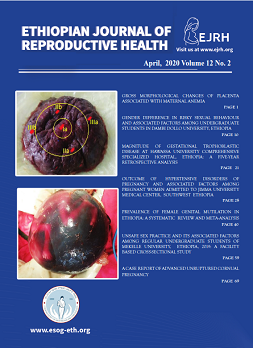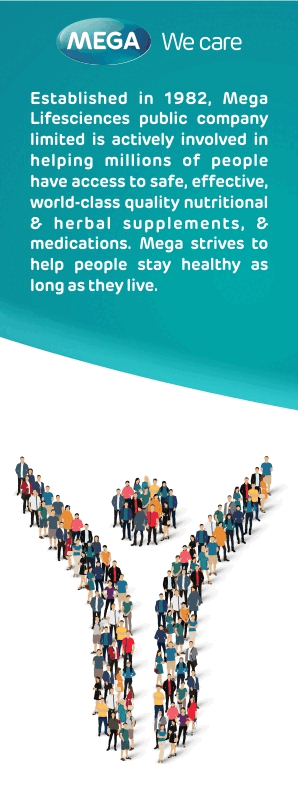Outcome of Hypertensive Disorders of Pregnancy and Associated Factors Among Pregnant Women Admitted to Jimma University Medical Center, Southwest Ethiopia
DOI:
https://doi.org/10.69614/ejrh.v12i02.397Keywords:
Hypertensive disorder of pregnancy, maternal outcome, perinatal outcome, associated factors, Jimma university medical centerAbstract
AbstractBackground: A Hypertensive disorder of pregnancy (HDP) is one of the most common obstetric complications that occur during pregnancy. It occurs generally in about 5 – 10 % of pregnancy and it accounts for 10 – 15 % of maternal death worldwide. It also accounts for perinatal mortality particularly from prematurity and associated complications. Even though there are few studies exploring HDP in Ethiopia, there was no study done on maternal and perinatal outcome of hypertensive disorders of pregnancy and associated factors in the study area. Hence, the aim of this study was to assess maternal and perinatal outcome of hypertensive disorders of pregnancy and associated factors in Jimma University Medical Center.
Method: Hospital based prospective cross sectional study was conducted among 202 mothers admitted to Jimma University Medical center from January 01/2019 to June 30/ 2019. Consecutive sampling technique was employed using interviwer administed quetionnaires. The data were entered using Epidata 3.1 version and exported to SPSS version 21. Bivariate and multi-variable binary logistic regression was used at 95% CI and AOR to identify predictors at P-value of <0.05.
Result: From 1980 total admission to labor ward and maternity ward, 202(10.2%) mothers were diagnosed with HDP. Preeclampsia with severity feature was the most common presentation (60 %) followed by eclampsia (10.4%). About one third (32 %) of the mother developed at least one maternal complication which could be considered as unfavorable maternal outcome. HELLP syndrome was the most common complications (38.5%) followed by aspiration pneumonia (20 %). Five mothers (2.4 %) of HDP died during the study period, three of them were due to eclampsia complicated by pulmonary edema and two were due to preeclampsia with severity feature complicated by acute kidney injury (AKI) with encephalopathy. There was statistically significant association between place of residency being rural area (AOR = 0.142, 95 % CI: 0.025, 0.801) and having eclampsia (AOR = 9.852, 95% CI: 2.963, 133) and unfavorable maternal outcome. Fifty percent of the fetuses developed unfavorable perinatal outcome with at least one complication. Prematurity and associated neonatal complications particularly hyaline membrane disease was the most common complication. There were 14.4 % still birth and 5.5 % ENND. Gestational age at delivery of 28 – 33 weeks (AOR = 10.11, 95 % CI : 1.635, 62.6), having eclampsia (AOR = 2.761, 95 % CI : 0.898, 8.487) and antepartum onset of HDP (AOR = 6.6 , 95% CI : 3.4,12.75) of the mother had statistically significant association with unfavorable perinatal outcome.
Conclusion and recommendation: The presence of preeclampsia with severity features and eclampsia has been associated with poor maternal and perinatal outcomes which were manifested by increased maternal ICU admissions, maternal death, preterm delivery rate still birth and ENND. JUMC should give due emphasis for early recognition and management of mothers with HDP.
Keywords: Hypertensive disorder of pregnancy, maternal outcome, perinatal outcome, associated factors, Jimma university medical center
References
2.Yifru B., Asres B., causes of maternal mortality in Ethiopia: a significant decline in abortion related death: 2014; 10 :15-26
3.Legesse T, et al Trends and causes of maternal mortality in Jimma University Specialized Hospital, southwest Ethiopia: a matched case–control study, international journal of women’s health ,2016
4.Saxena R. 2014. Bedside Obstetrics & Gynecology. 2nd ed. Jaypee Brothers Medical Publishers Private Limited, New Delhi, Page 497
5.Rathore RB, Iqbal A, Khan M. Complications and outcome of patients of pre-eclampsia and eclampsia presenting to medical wards of Mayo Hospital Lahore. ANNALS. 2014; 16:
6.Zenebe W,Hailemariam S, Mirkuzie W, hypertensive disorders of pregnancy in Jimma University Specialized Hospital. Ethiop J Pregnancy ; 48: 10 – 19
7.Gaym A, Bailey P, Bluwei P, Admasu K, Gebrehiwot Y. Disease burden due to pre eclampsia/eclampsia and the Ethiopian health system’s response. Int J Gynecol Obstet. 2011; 115: 112-116
8.Bharti C. Role of 2 gram calcium supplementation in prevention of pre-eclampsia in high
risk cases. JEMDS. 2013; l2: 7205-7210
9.Osungbade K, Ige O. Public health perspectives of preeclampsia in developing countries: implication for health system strengthening. J Pregnancy 2011; 48: 10-95.
10.Abdella A. Maternal mortality trend in Ethiopia.Ethiop J Health Dev. 2010; 24: 115-122.
11.Say L, Chou D, Gemmill A, et al. Global causes of maternal death: a WHO systematic analysis. Lancet Glob Health.2014;2(6):e323–e333.
12.Maereg W. Muluken D, Alemayehu W, et al. Trends of preeclampsia/eclampsia and maternal and neonatal outcomes among women delivering in addis ababa selected government hospitals, Ethiopia: a retrospective cross-sectional study, 2016 :25;12-15
13.Backes CH, Markham K, Moorehead P, Cordero L, Nankervis CA, Giannone PJ. Maternal preeclampsia and neonatal outcomes. J Pregnancy. 2011;2011:1–7.
14.Asheber Gaym et al. Ethiopian National EmONC Assessment team , Disease burden due to preeclampsia and eclampsia and the E thiopian health system’s response , 2011
15.International Federation of Gynecology and Obstetrics. 2011, oct ; 115( 1) : 112-116
16.TukurJidoA.Eclampsia: maternal and fetal outcome. African health sciences. 2012 Jun ; 12 (2) : 148 -152
17.Duley L, Gulmezoglu AM, Henderson-Smart DJ. Magnesium sulphate and other anticonvulsants for women with pre eclampsia (Cochrane Review). Oxford: The WHO Reproductive Health Library CD-ROM No. 10; 2007.
18.Duley L, Gulmezoglu AM, Henderson-Smart DJ, Chou D. Magnesium sulphate and other anticonvulsants for women with pre-eclampsia. Cochrane Database Syst Rev. 2010; 11: CD000025
19.Muganyizi P, Shagdara M. Predictors of extra care among magnesium sulphate treated eclamptic patients at Muhimbili National Hospital, Tanzania. BMC Pregnancy Childbirth. 2011; 11: 41.
20.Gupta T, Gupta N, Jain J, Gupta S, Bhatia P, Bagla J. Maternal and perinatal outcome in patients with severe preeclampsia/eclampsia with and without help syndrome. Journal of Universal College of Medical Sciences.2013; 1: 7-12
21.Sujittra J, Somchai T. Perinatal Outcomes in Severe PreeclampticWomen between 24-33+6weeks’ Gestation.J Med Assoc Thai.2008; 91: 25-30
22.Khan I. Magnesium sulfate versus diazepam infusion in eclampsia, Annals of KEMU. 2009;15: 149-151.
23.Altman D, Carroli G, Duley L, Farrell B, Moodley J, Neilson J, et al. Magpie Trial Collaboration Group. Do women with pre-eclampsia, and their babies, benefit from magnesiumsulphate The Magpie Trial: randomized placebo controlled trial. Lancet. 2002; 359: 1877-1890.
24.Swamy MK, Patil K, Nageshu S. Maternal and perinatal outcome during expectant management of severe pre-eclampsia between 24 and 34 weeks of gestation. J Obstet Gynaecol India. 2012; 62: 413-41
25.Souza JP, Gulmezoglu AM, Carroli G, Lumbiganon P, Qureshi Z, WHOMCS Research Group. The World Health Organization multicountry survey on maternal and newborn health: study protocol. BMC Health ServRes 2011;11:286
26.Shah A, Faundes A, Machoki M, Bataglia V, Amokrane F, Donner A, et al. Methodological considerations in implementing the WHO Global Survey for Monitoring Maternal and Perinatal Health. Bull World Health Organ2008;86:126–31
27.Littell RC, et al. SAS for Mixed Models, 2ndedn. Cary, NC: SAS Institute; 2010
28.Roberts CL, Bell JC, Ford JB, et al. The accuracy of reporting of the hypertensive disorders of pregnancy in population health data , 2008;27:285–97
29.Alves E, Azevedo A, Rodrigues T, Santos AC, Barros H. Impact of risk factors on hypertensive disorders in pregnancy, in primiparaeand multiparae. Ann Hum Biol 2013;40:377–84.
30.Duckitt K, Harrington D. Risk factors for pre-eclampsia at antenatal booking: a systematic review of controlledstudies. BMJ 2005 ,330:565–7.
31.E. O. V. Ugwu, C. C. Dim, C. D. Okonkw, and T. O. Nwankwo, “Maternal and perinatal outcome of severe pre-eclampsia I Enugu, Nigeria after introduction of Magnesium sulfate,” Nigerian Journal of Clinical Practice, vol. 14, no. 4, pp. 418–421,2011
32.J. Tukur, B. Ahonsi, S. Mohammed Ishaku, I. Araoyinbo, E. Okereke, and A. O. Babatunde, “Maternal and fetal outcomes after introduction of magnesium sulphate for treatment of preeclampsia and eclampsia in selected secondary facilities: a low-cost intervention,” Maternal and Child Health Journal, vol. 17, no. 7, pp. 1191–1198, 2013.
33.Hailemariam B., Fikre E. and Wubegzier M.et.al . Risk factors for hypertensive disorders of pregnancy among mothers in Tigray region, Ethiopia: matched case-control study, 2018; 1186/12884-018
34.Yifru B, Asres B. perinatal mortality trends in Ethiopia, Ethiop J Health Sci. 2014;10:29-39
35.L. Duley, D. J. Henderson-Smart, G. J. Walker, and D. Chou, “Magnesium sulphate versus diazepam for eclampsia,” Th Cochrane Database of Systematic Reviews, no. 12, 2010
36.Gezehagn E and Yifru B. Perinatal Outcome in Women with Hypertensive Disorders of Pregnancy: A Retrospective Cohort Study,2014,1115:1-7
37.Laura A. Magee MD, FRCPC, The FIGO Textbook of Pregnancy Hypertension ,An evidence-based guide to monitoring prevention and management,2016; 80-135
38.Solwayo ngwenya, severe preeclampsia and eclampsia: incidence, complications, and perinatal outcomes at a low-resource setting, Mpilo central Hospital, Bulawayo, Zimbabwe, International Journal of Women’s Health, 2017; 353-356
39.E Abalos, C Cuesta, G Carroli,et .al. Pre-eclampsia, eclampsia and adverse maternal and perinatal outcomes: a secondary analysis of the World Health Organization Multicountry Survey on Maternal and Newborn Health, 2013,11;1471-0528.



